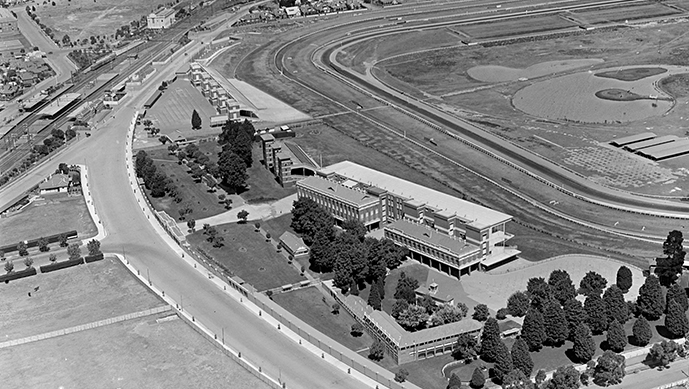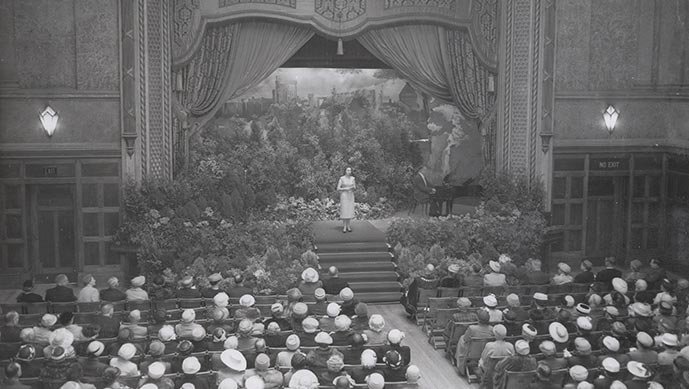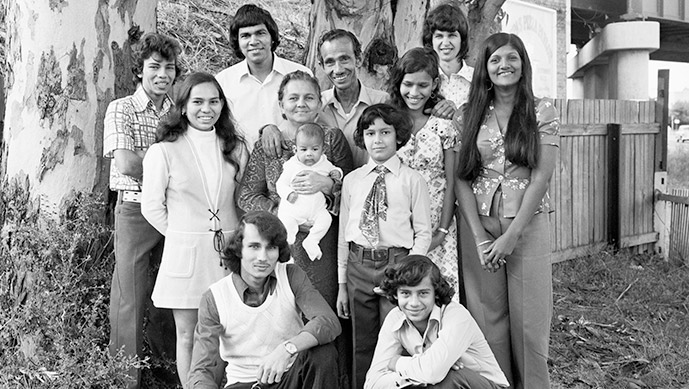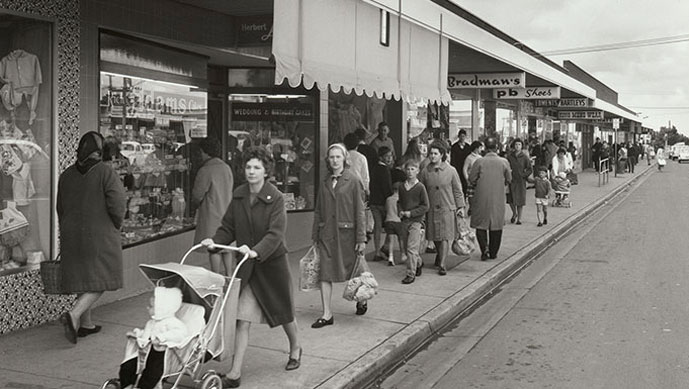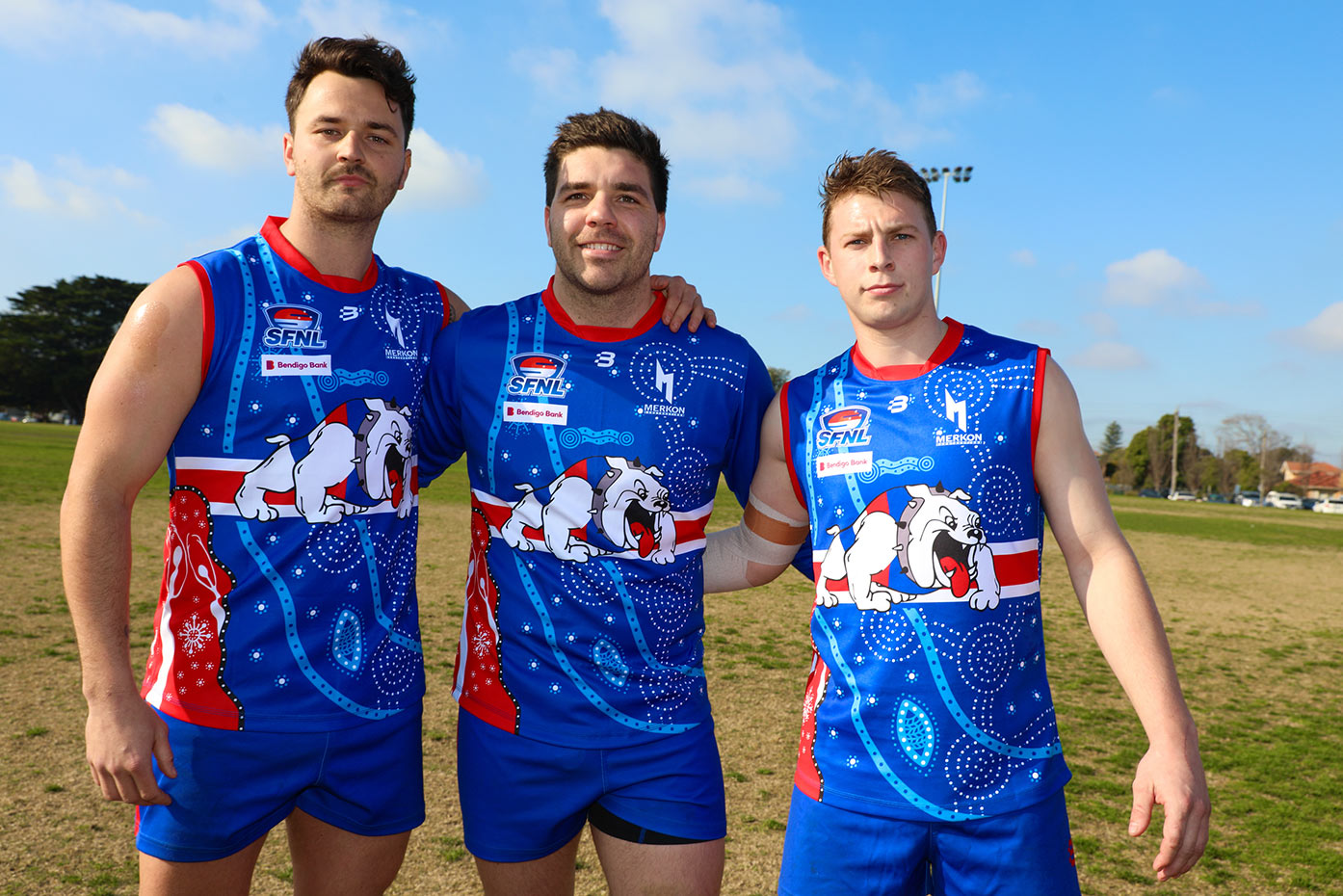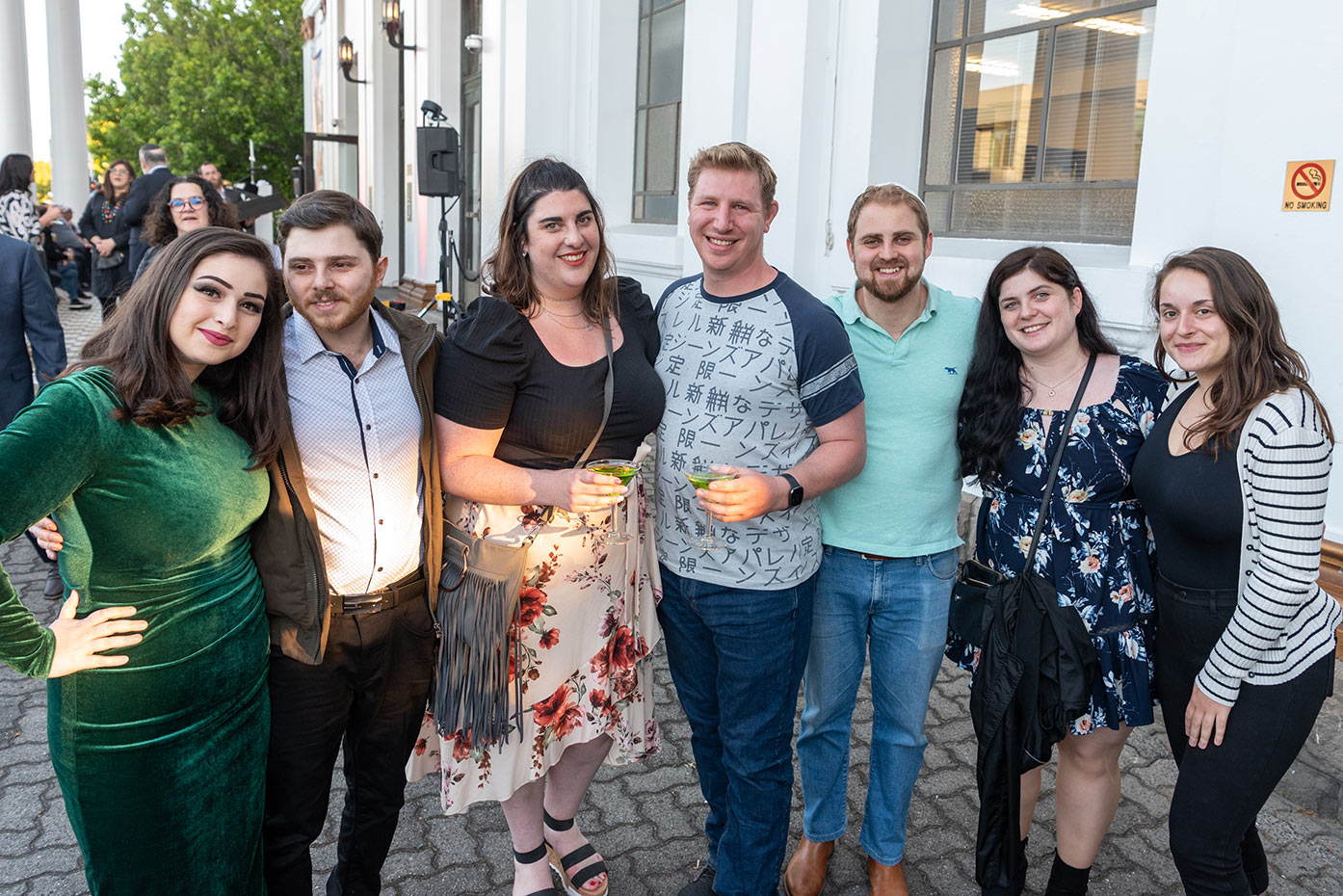Acknowledgement of Country
Glen Eira City Council acknowledges the Boonwurrung/Bunurong and Wurundjeri Woi Wurrung peoples of the Eastern Kulin Nation as Traditional Owners and Custodians, and we pay our respects to their Elders past, present and emerging.
We recognise Aboriginal and Torres Strait Islander peoples’ histories and their continuing spiritual connection to the land and seas. Council values the living culture and practices of First Nations peoples and supports their right to self-determination.
Council extends its respect to all First Nations peoples.
‘Our Glen Eira: A thriving and empowered community working together for an inclusive and sustainable future.’ – The Glen Eira 2040 Community Vision
The Community Vision statement is accompanied by six guiding principles that include:
We work together
Council and Glen Eira residents will always work together in collaboration to ensure fair and equitable decision-making. We make and communicate transparent decisions for the future of the City that genuinely represent the views of citizens.
Planning for community resilience
Our Glen Eira must be adaptable to address future social, economic and environmental realities, in particular climate change. Council and Councillors must operate at all times under the core concepts of accountability and responsiveness, reliability and transparency for the whole community.
Inclusive and healthy community
All members of our Glen Eira community feel a strong sense of belonging and feel safe with equitable access to all public resources. As a diverse community we draw attention to: First Nations peoples, the elderly, people with disability, cultural groups, refugees, disadvantaged groups, LGBTIQA+, youth and other diverse populations and minorities. Our community health supports every effort to achieve optimal physical and mental wellbeing for every person.
Maximise and diversify our green and natural spaces
Preserve, regenerate and maximise green and natural spaces and develop connected green areas across Council boundaries (in both private and public spaces), in consultation with First Nations peoples.
We are proactive in meeting challenges and innovate using evidence-based methods
Proactive action: Continually and proactively working towards the betterment of the community and the Glen Eira environment.
Evidence-based: Trialling innovative programs using evidence-based methods.
Overall: Finding innovative, effective and creative solutions for the long-term sustainability and wellbeing of the community.
Promote and develop our creative potential, celebrating our diverse identities through art and other cultural expression
Commitment to facilities and spaces being available and accessible to all ages and abilities to express themselves creatively and freely. Celebrating the artistic and cultural diversity in our community including the evolving cultural values and established traditions of our First Nations peoples.
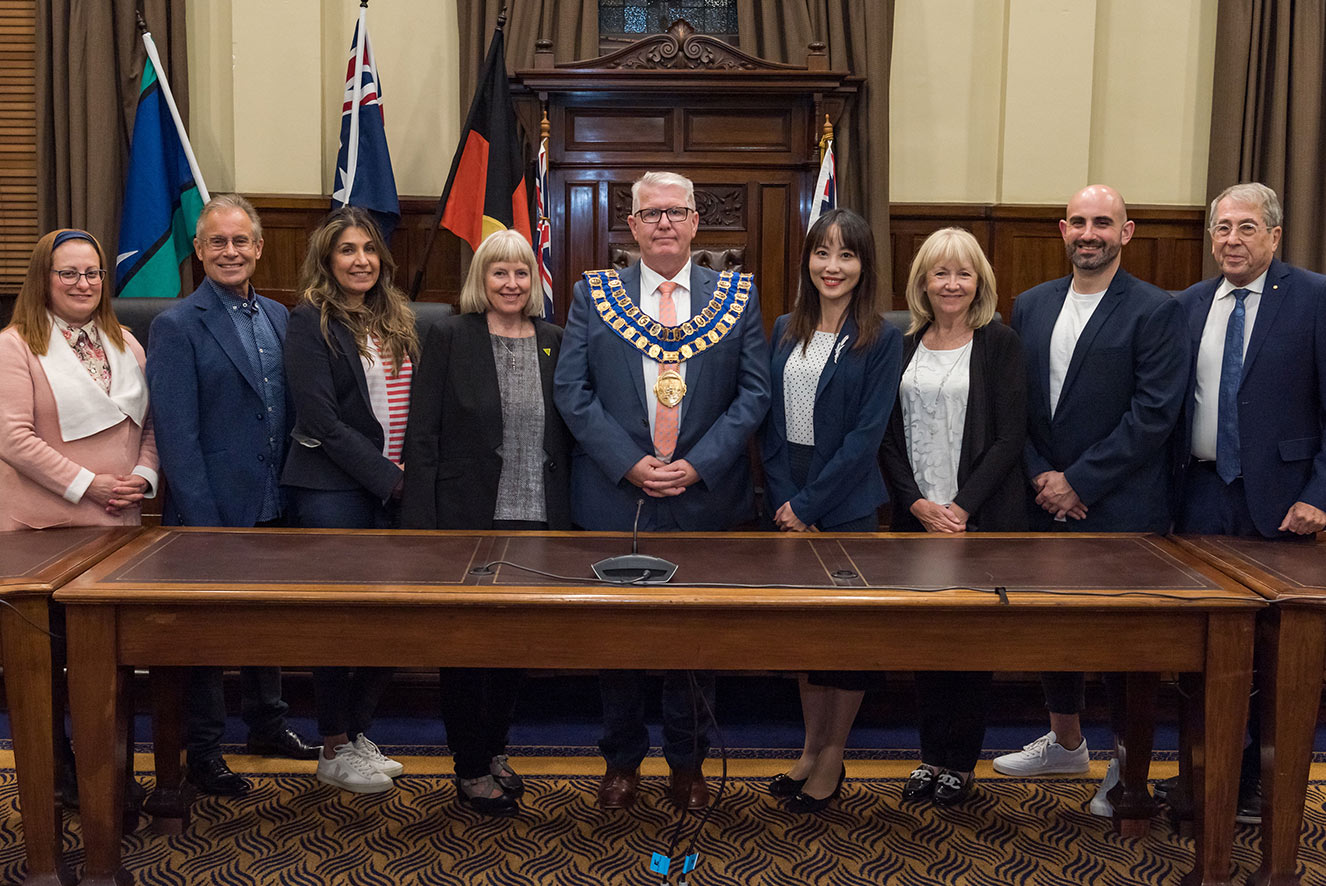
- To provide quality facilities, services, safeguards and supports
- Towards goals that are beyond the capacity of individuals, but achievable when working together
- According to overall values, needs and priorities
- In a caring, accountable and professional way
- To provide value-for-money for present and future generations.
- Advocating and promoting proposals in the best interests of the community. See our Priority Advocacy Projects 2022–2023;
- Planning and providing community services and facilities. See our Council Plan;
- Providing and maintaining community infrastructure in the municipal district. See our Council Plan;
- Conducting strategic and land use planning. See our Council Plan;
- Raising revenue to allow us to perform our functions. See our rates and charges;
- Performing our duties, functions and powers under the Local Government Act 1989 and the Local Government Act 2020 and other Acts. See Corporate governance; and
- Other functions related to the peace, order and good government of the municipal district. See Council Committees.
It was created in 1994 when the former City of Caulfield merged with several suburbs from the former City of Moorabbin.
Glen Eira is 39 square kilometres in area. It includes the suburbs of Bentleigh, Bentleigh East, Carnegie, Caulfield, Caulfield East, Caulfield North, Caulfield South, Elsternwick, Gardenvale, Glen Huntly, McKinnon, Murrumbeena, Ormond and part of Brighton East and St Kilda East.

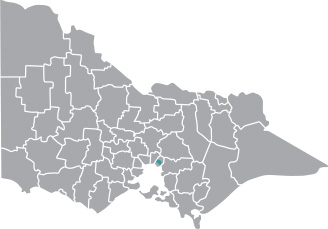
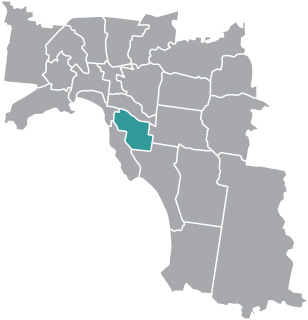
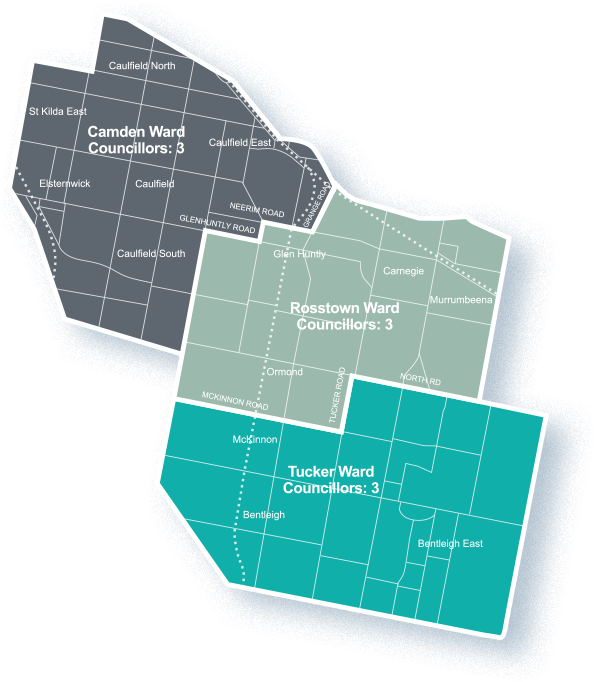
The City of Glen Eira is located on the traditional lands of the Yaluk-ut Weelam clan of the Boonwurrung peoples.* The Boonwurrung, also known as Bunurong, are one of the five language groups that make up the larger confederation of the Kulin Nation. This confederation is connected through shared moieties — Bunjil, who travels as an eagle, protects the land and Waa, who travels as a crow, protects the waterways. Yaluk-ut Weelam means ‘people of the river’.
The history of the Boonwurrung people dates back many thousands of years. The traditional life of the Yaluk-ut Weelam centred around the six seasons of the year. Each season celebrated the richness and diversity of nature. The natural environment of the area, particularly its swamps, provided the Boonwurrung with valuable staple food resources, such as plants, birds and eels. There were many swamps around Glen Eira, including Paddy’s and Leman’s Swamps that were important camping places for the Yaluk-ut Weelam. The landscape of the municipality has altered vastly since European colonisation and these swamps were developed into public parks — Caulfield Park and Koornang Park/Lord Reserve, Carnegie respectively.
Glen Eira City Council is working towards a unified, respectful and thriving community that embraces Australia’s First Peoples for their experiences of the past, their resilience in the present and their aspirations for the future. Council extends its respect to all First Nations peoples.
After European colonisation, it became two municipal areas called Caulfield and Moorabbin. The name Caulfield has identified the area around Caulfield Racecourse Reserve since 1853, but we’re unsure of its origins. It may be linked with Baron Caulfield of Ireland or colonial pioneer John Caulfield. The Moorabbin Road District was established in 1862. Its boundaries ran south-east from the outskirts of Brighton along both sides of Nepean Road, as far as Mordialloc Creek. In 1870, Caulfield was described as ‘a pastoral and agricultural district of 5,280 acres with a population of 900’. The area was dotted with orchards, market gardens and dairy farms.
Glen Eira is named after two local landmarks — Glen Eira Road and Glen Eira Mansion. Glen Eira Road is a major City thoroughfare. It dates back to the mid-1800s when the then colonial government put Crown allotments up for sale. Pioneer pastoralist Henry Ricketson built the 18-room Glen Eira Mansion on Kooyong Road, remodelling the townhouse he bought in 1865. The house was later the site of the Caulfield Military Hospital before it was demolished in 1964. A number of other mansions built in Glen Eira during this time, such as Rippon Lea and Labassa, were preserved by the National Trust and are open to the public.
* On 1 July 2021, the Victorian Aboriginal Heritage Council awarded Registered Aboriginal Party (RAP) status to the Bunurong Land Council Aboriginal Corporation and the Wurundjeri Woi Wurrung Cultural Heritage Aboriginal Corporation.
Glen Eira’s people
GLEN EIRA’S POPULATION OF 155,123* IS MADE UP OF 57,974** HOUSEHOLDS, FROM MORE THAN 160 DIFFERENT CULTURAL BACKGROUNDS. IT’S ALSO THE CENTRE OF MELBOURNE’S JEWISH COMMUNITY.
* Source: Australian Bureau of Statistics, estimated resident population for Glen Eira Local Government Area 2021 at 30 June 2022.
**Source: Australian Bureau of Statistics, Census of Population and Housing 2021 as at 30 June 2022.
Glen Eira’s diverse population*
- 40.2 per cent of our residents were born overseas.
- Other than English, the most common languages spoken at home are Mandarin (5.7 per cent), Greek (4.0 per cent), Russian (3.0 per cent), Hebrew (2.0 per cent) and Hindi (1.3 per cent).
- 31.8 per cent of residents identify as Christian, with the most practised Christian religions being Catholicism, Anglicanism and Eastern Orthodoxy.
- 37.1 per cent of residents nominated no religion in the 2021 Census.
- 16.4 per cent of residents identify their religion as Judaism.
- 7,161 residents (4.8 per cent) have a disability requiring daily assistance with life tasks.
- 21.4 per cent of the population is aged 60 years and over.
*Source: Australian Bureau of Statistics, Census of Population and Housing 2021 as at 30 June 2022.
Glen Eira’s age groups*
The Glen Eira workforce*
Local job numbers in Glen Eira in 2021–22 was estimated at 46,155* an increase of 2,903 (6.7 per cent) on 2020–21 numbers.
The average number of employed residents in Glen Eira in 2021–22 was estimated at 85,669, up 4,249 (5.2 per cent) from 2020–21.
*Source: National Institute of Economic and Industry Research (NIEIR) ©2021. Figures are average to June 2021 quarter.
Glen Eira’s households*
With a diverse range of housing, we’re home to a range of age groups and life stages. In 2021, there were 57,974 households in Glen Eira. One-person homes make up 28 per cent of our households, compared to 25 per cent across Melbourne.
We have a smaller proportion of families with children than Melbourne. One and two-parent families make up 40.3 per cent of our households, compared to Melbourne’s 43.3 per cent.
The most common household types in Glen Eira were couple families with children (31.7 per cent) followed by lone-person households (27.3 per cent).
We average 2.4 people per household.
*Source: Australian Bureau of Statistics, Census of Population and Housing 2021 as at 30 June 2022.
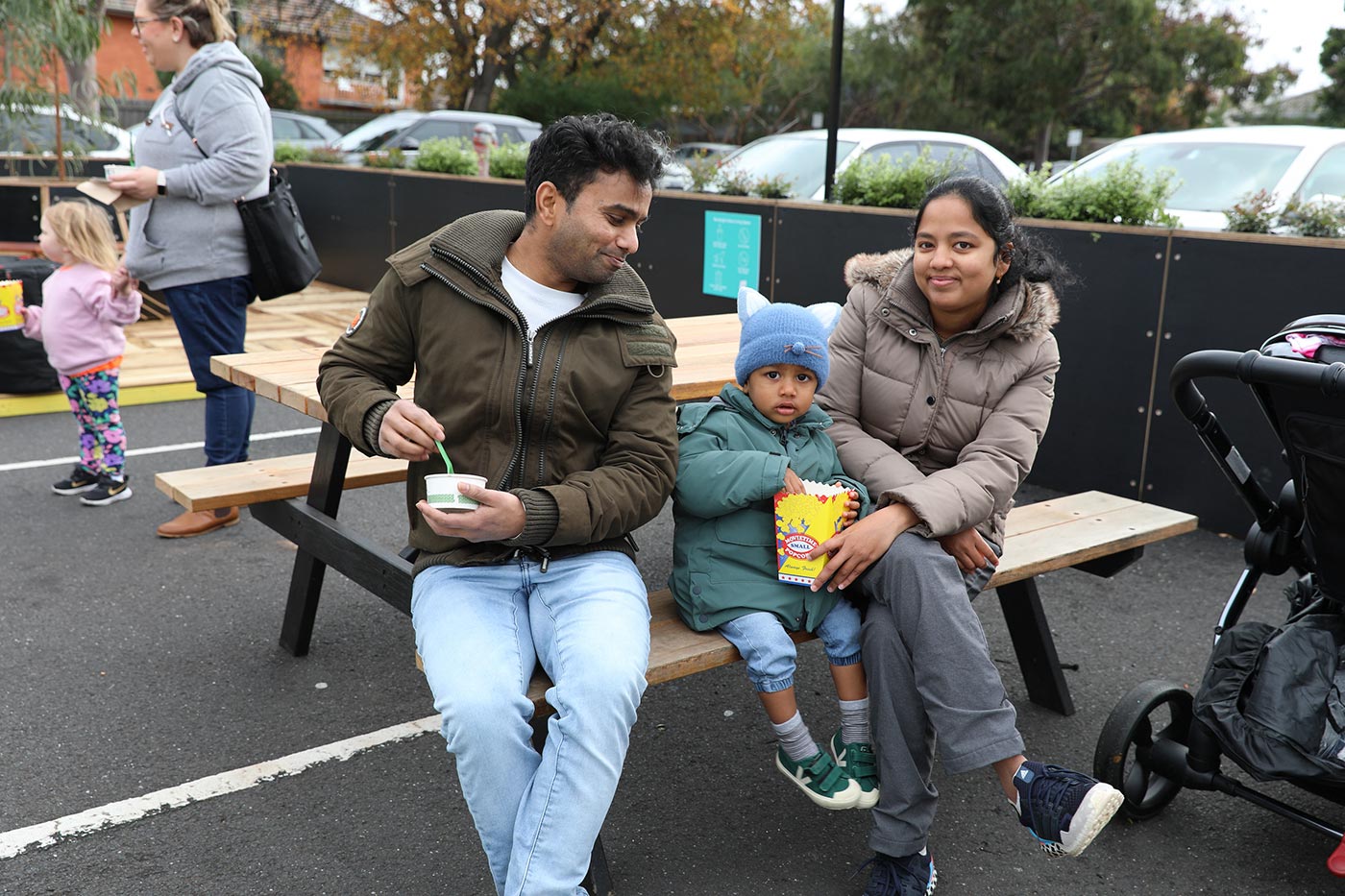


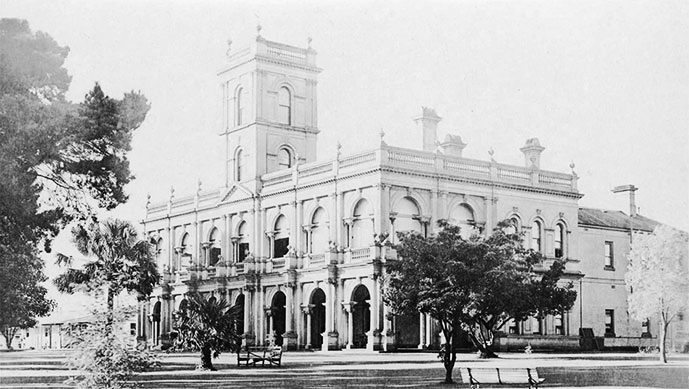
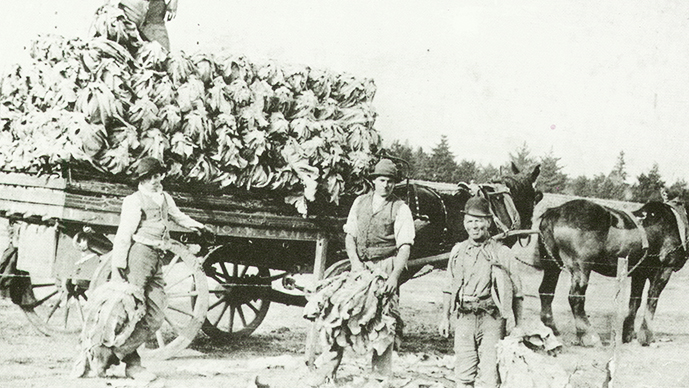
![New Electric [Tram] Cars, Elsternwick. 1913. Image courtesy State Library of Victoria. New Electric [Tram] Cars, Elsternwick. 1913. Image courtesy State Library of Victoria.](https://annualreport2021-22.gleneira.vic.gov.au/wp-content/uploads/03_HH.jpg)
